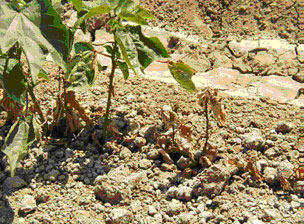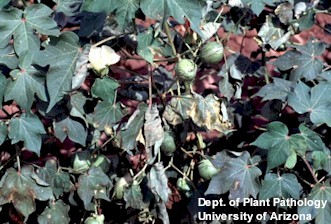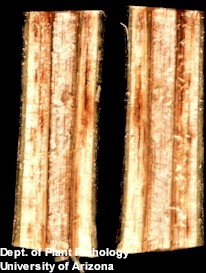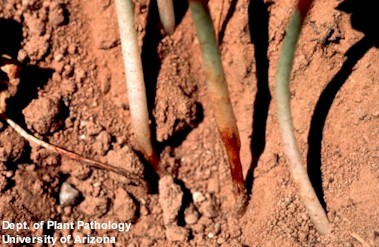Root-knot Nematode
The Root-knot nematode, Meloidogyne incognita, infects cotton and many other plants.
This nematode is widespread in Arizona and is usually found in sandy or sandy loam soils.
It is an obligate parasite that must complete its life cycle in a plant host,
but eggs are persistent and can remain inactive in the absence of a host and/or in fallow fields for months or years.
It is most active in the summer when soil temperatures are warm.
As M. incognita larvae enter the plant root, feed, and mature,
the surrounding cells of the plant root increase in size and divide causing swellings (galls) on the roots.
In cotton, these swellings are usually small and often very inconspicuous.
Plants may be heavily infected even though galls are not easily visible (see photo).
Once cotton plants are infected, the flow of nutrients and water is restricted.
Severely infected young plants are often stunted and chlorotic.
Infected mature plants do not die, but yields are reduced.
Because of the wide host range of root-knot nematode, control is difficult.
Sorghum, corn, melons, watermelon, peppers and beans, among many other crops, are all hosts.
Rotations to alfalfa and oats, which are not hosts, are effective, especially in multiple year rotations.
Pre-plant soil fumigation with 1,3 Dichloropropene is also effective in reducing early infections.
Fumigation is recommended if greater than 0.5 juveniles/cc soil are detectable.





 A new race of
A new race of 




